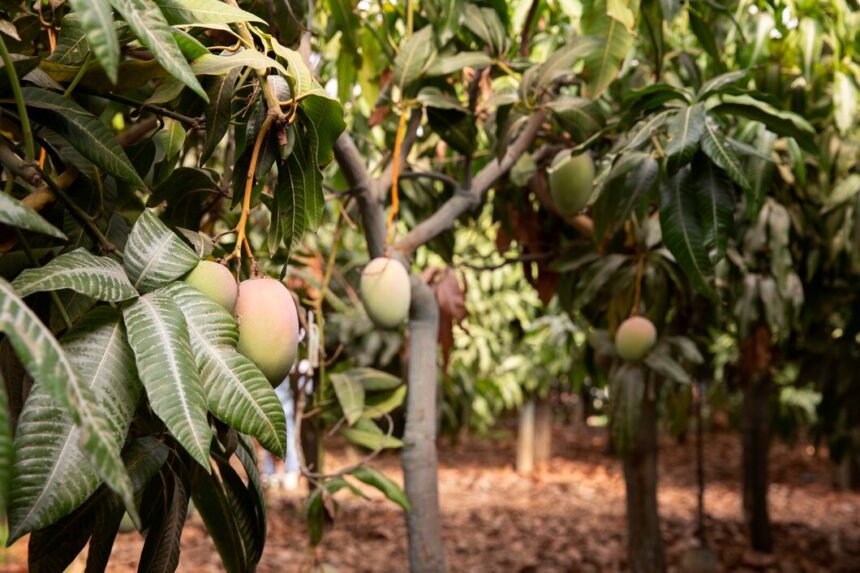Anthracnose is a common fungal disease affecting mango trees, and early detection is crucial to preventing severe damage. Here are ten early signs that your mangoes might have anthracnose:
- Dark Spots on Fruit: One of the earliest signs of anthracnose is the appearance of dark, sunken spots on mangoes. These spots usually start small but can enlarge and merge, affecting the fruit’s overall quality.
- Lesions with Pinkish Centers: Lesions often have a characteristic pinkish or salmon-colored center, which is a key indicator of the anthracnose fungus. These lesions are more prominent when the fruit is cut open.
- Sunken Fruit Areas: The areas affected by the disease can become sunken and depressed compared to the healthy parts of the fruit. This is due to the necrotic tissue that the fungus causes.
- Premature Fruit Drop: Infected mangoes may drop from the tree prematurely. If you notice an unusual number of mangoes falling off before they are ripe, anthracnose could be the culprit.
- Black Moldy Growth: In severe cases, you might observe black moldy growth on the surface of the mangoes, especially around the lesions. This is the result of secondary fungal infections taking advantage of the damaged fruit.
- Soft Spots and Rotting: The fruit may develop soft, mushy spots and eventually start rotting. These symptoms are often accompanied by a foul smell, indicating advanced infection.
- Irregular Shaped Fruit: Mangoes affected by anthracnose might develop irregular shapes or deformities. This is due to the fungus disrupting normal fruit development.
- Fungal Growth on Leaves: Though not directly on the fruit, fungal growth or dark spots on the mango tree’s leaves can indicate the presence of anthracnose. This can lead to reduced fruit quality and yield.
- Reduced Fruit Quality: Even if the fruit doesn’t show obvious signs of anthracnose, a general decline in fruit quality—such as a reduction in sweetness or texture—can be a subtle indicator of the disease.
- Increased Pest Activity: Anthracnose can weaken the fruit and make it more susceptible to pest infestations. If you notice an increase in pest activity around your mango trees, it might be due to underlying fungal issues.
To manage anthracnose, ensure proper sanitation, use resistant mango varieties, and apply appropriate fungicides as needed. Regular monitoring and early intervention are key to protecting your mango crop from this destructive disease.
Join 'Farmers Mag' WhatsApp Channel
Get the latest Farming news and tips delivered straight to your WhatsApp
CLICK HERE TO JOIN






